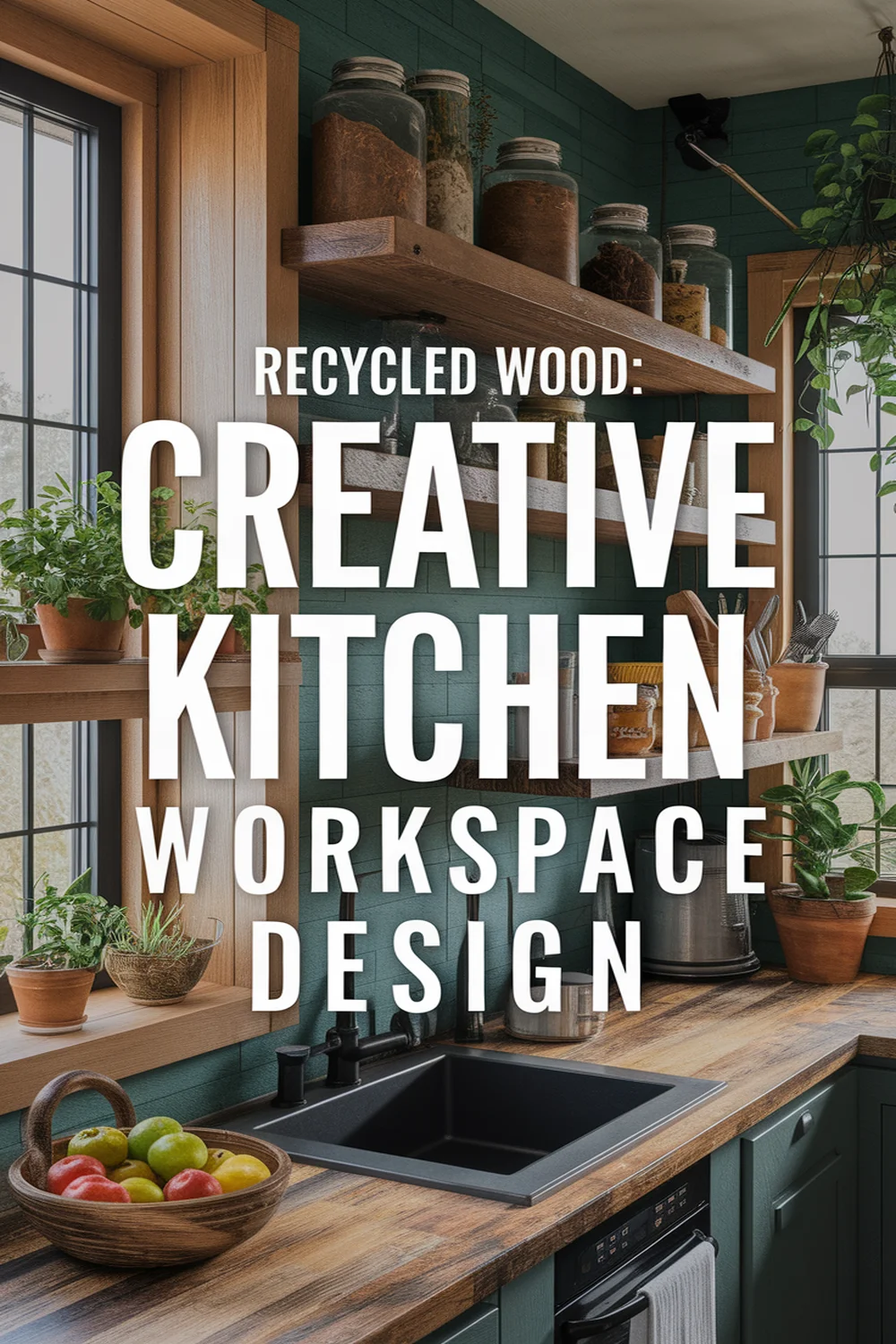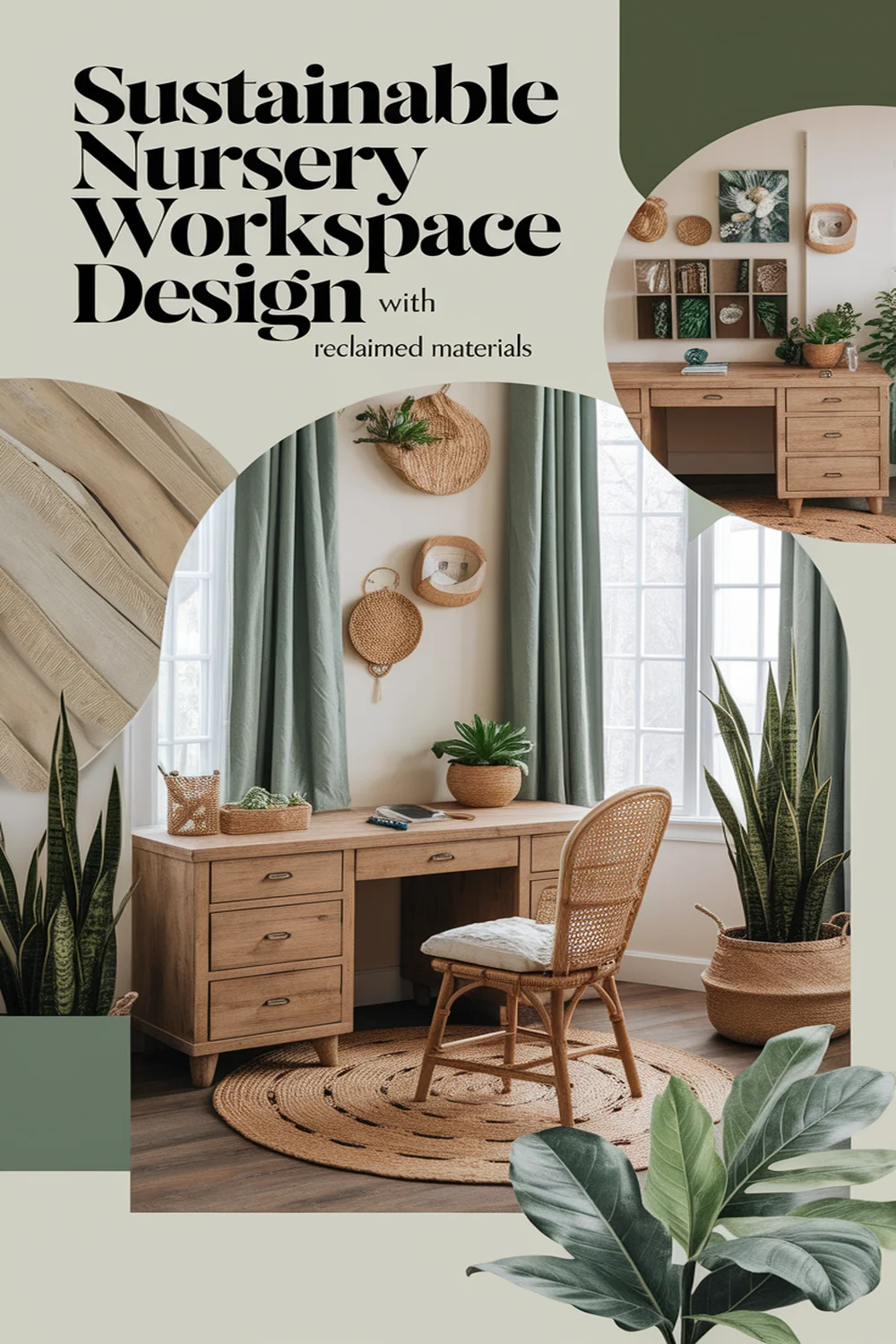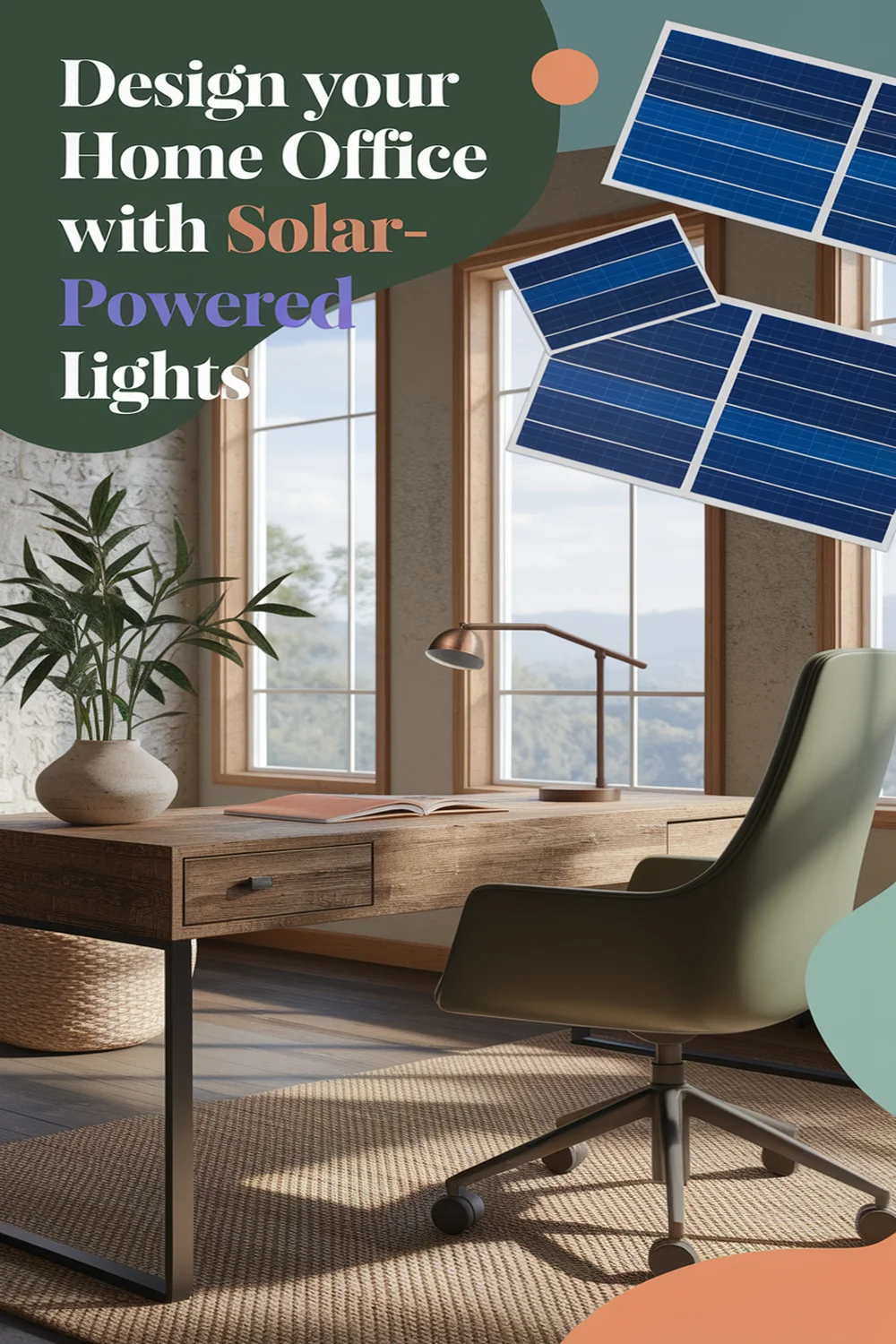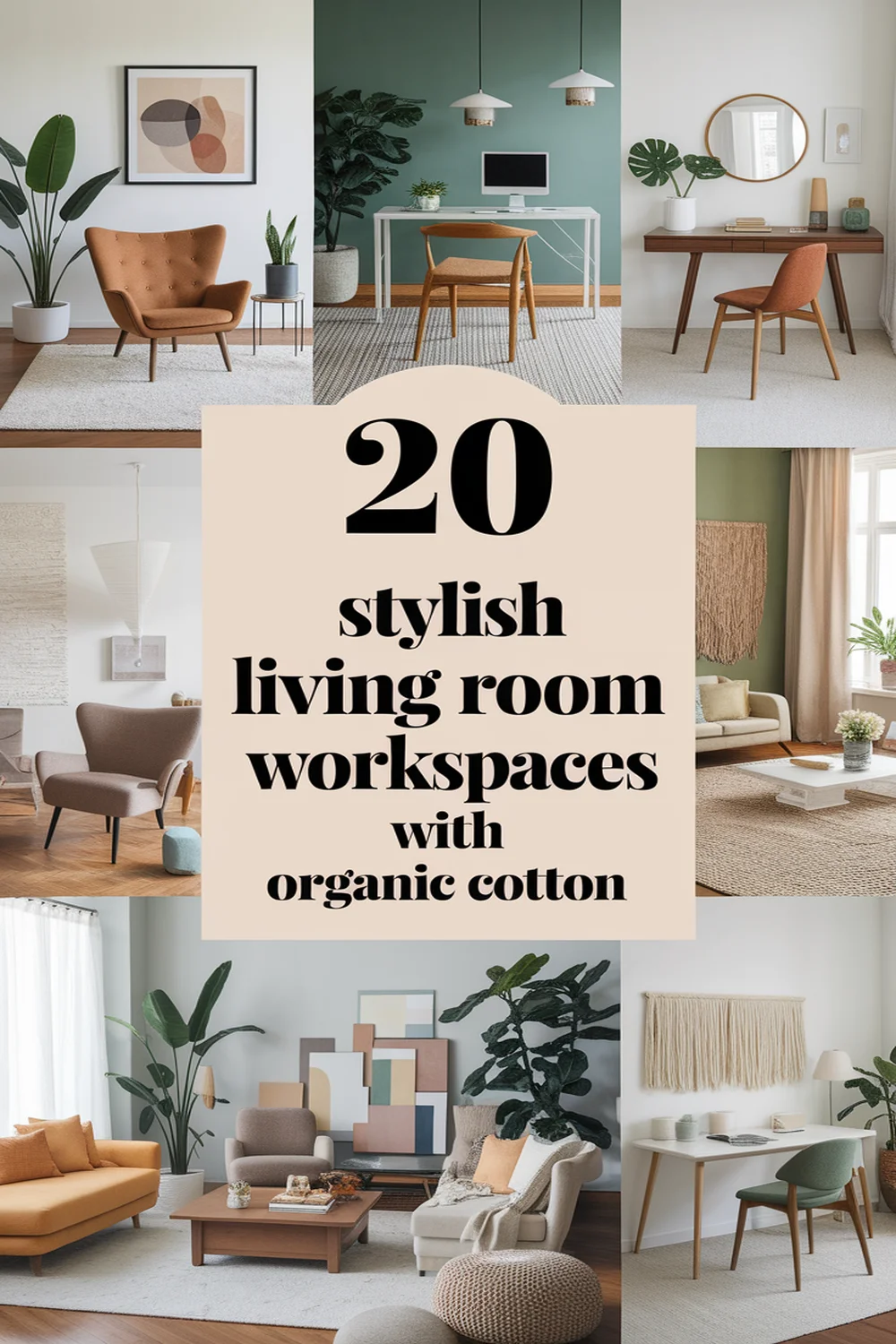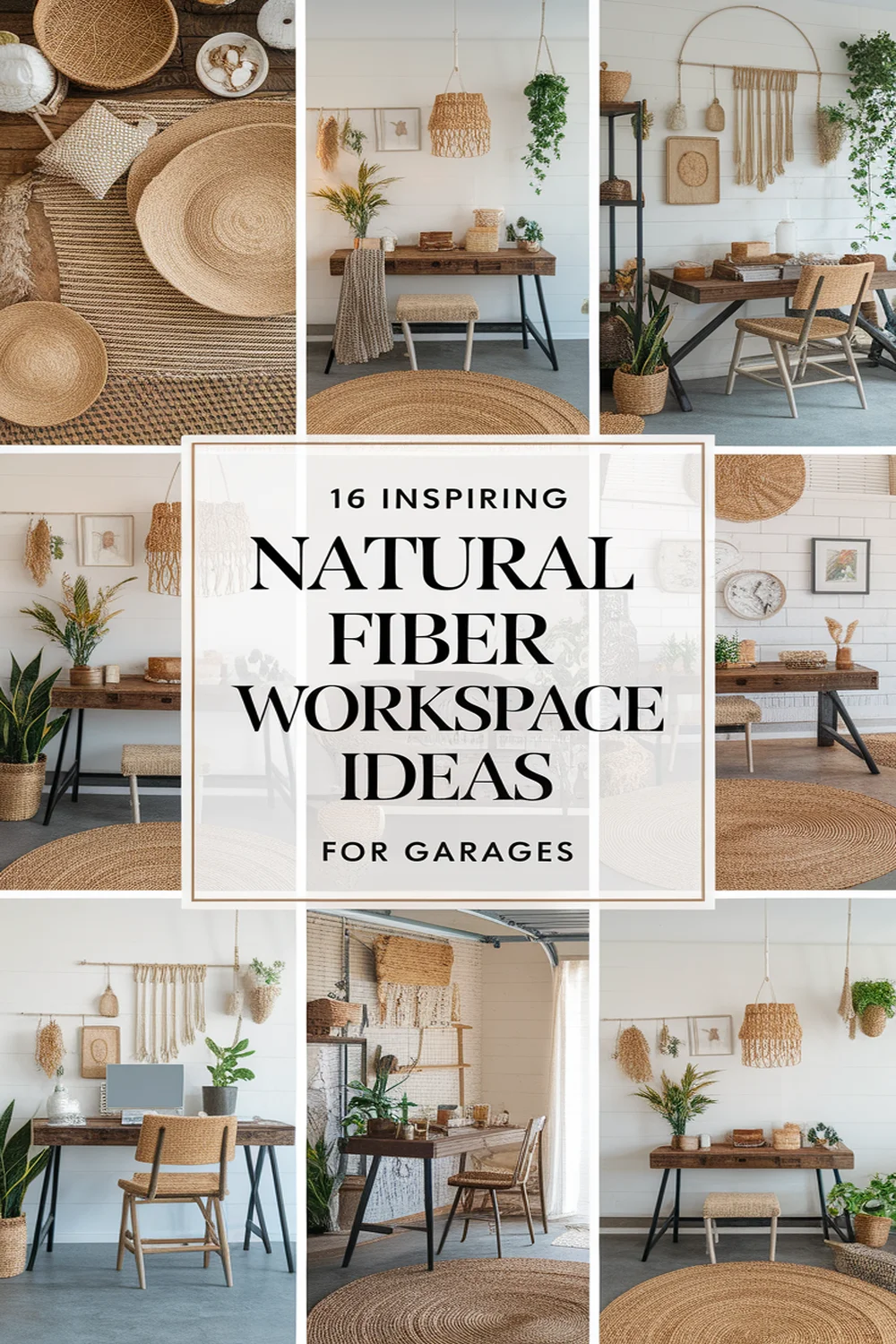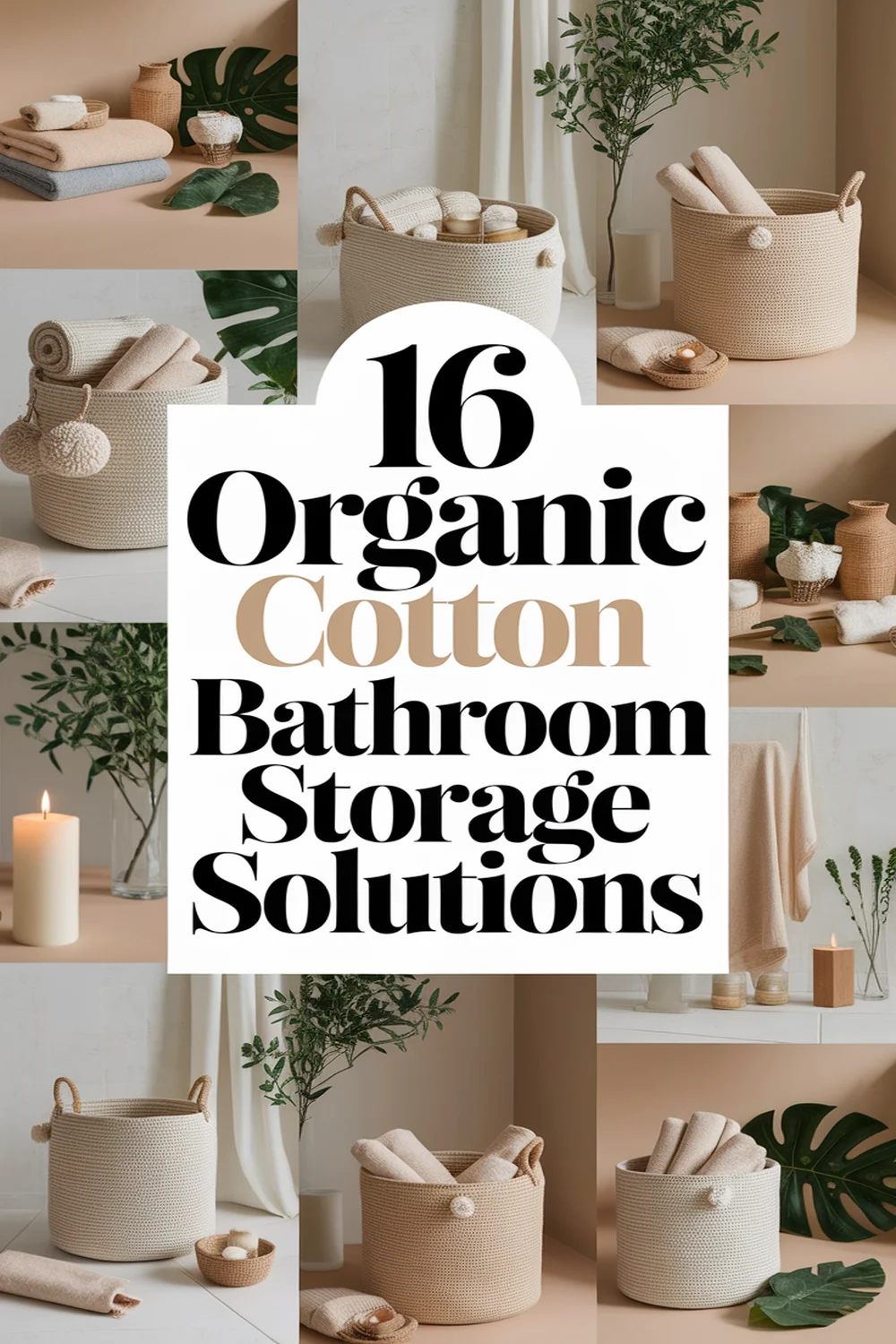This post may contain affiliate links. Please read our policy page.
I love transforming kitchen workspaces with recycled wood. It adds warmth and character while being environmentally friendly. I often use barn wood for rustic countertops and reclaimed pallets for open shelving. These materials not only minimize waste but also create a unique aesthetic. Plus, it’s fun to incorporate DIY projects, like picture frames and custom cabinets. If you want to explore more creative ideas and techniques, there’s plenty more to discover!
Understanding the Benefits of Recycled Wood in Kitchen Design

When I think about designing a kitchen that’s both stylish and sustainable, using recycled wood immediately comes to mind. Not only does it add a unique character and warmth, but it also tells a story of resourcefulness.
By choosing recycled wood, I’m reducing the demand for new timber, which helps conserve forests and minimizes waste. Each piece comes with its own history, making my kitchen feel personal and inviting.
It’s also incredibly versatile; whether I’m crafting cabinets or countertops, recycled wood can fit any aesthetic. Plus, it’s often more affordable than new wood, allowing me to invest in other eco-friendly features.
Embracing recycled wood isn’t just a design choice; it’s a commitment to a sustainable future.
Recommended Items
Here are our recommended products and equipment to create your dream kitchen workspace—feel free to explore!
Choosing the Right Type of Recycled Wood

As I explore the world of recycled wood, I realize that choosing the right type is essential for achieving both functionality and aesthetics in my kitchen design. With so many options available, I like to reflect on the wood’s origin, durability, and visual appeal. Here’s a quick comparison of some popular choices:
| Type of Recycled Wood | Characteristics |
|---|---|
| Barn Wood | Rustic, sturdy, rich history |
| Pallet Wood | Affordable, versatile, easily available |
| Boat Wood | Water-resistant, unique textures, eco-friendly |
| Urban Salvage Wood | Sustainable, often reclaimed from old buildings |
| Furniture Salvage | Distinctive styles, great for upcycling |
How to Create Stunning Recycled Wood Countertops

Recycled wood countertops can transform your kitchen into a stunning focal point while promoting sustainability. I love sourcing reclaimed wood, as each piece carries its own story.
Start by selecting wood that suits your style—think barn wood for rustic charm or pallets for a modern edge. After gathering your materials, I recommend sanding them down to bring out their natural beauty.
Next, I apply a food-safe finish to protect the surface while enhancing the wood’s character. Assembling the pieces into a cohesive design is essential; I often use a strong adhesive and clamps for secure bonding.
Finally, installing the countertop is a rewarding process, and you’ll appreciate the unique touch it adds to your kitchen. Enjoy your beautiful, eco-friendly creation!
Designing Custom Cabinets With Reclaimed Wood

While I’ve always been passionate about sustainability, designing custom cabinets with reclaimed wood takes that commitment to a new level.
Designing custom cabinets with reclaimed wood elevates my passion for sustainability to new heights.
Using materials that have a story not only adds character but also minimizes waste. Here’s how I approach the process:
- Select Quality Reclaimed Wood: Look for wood from old barns, factories, or furniture.
- Plan Thoughtfully: Design cabinets that fit your space and lifestyle, maximizing functionality.
- Embrace Unique Features: Highlight knots, grain patterns, and imperfections for a one-of-a-kind look.
- Finish Sustainably: Use eco-friendly stains and finishes to protect the wood while maintaining its natural beauty.
Creating cabinets this way transforms your kitchen into a sustainable sanctuary, showcasing both style and responsibility.
Incorporating Open Shelving for a Rustic Touch

Custom cabinets made from reclaimed wood create a stunning foundation for any kitchen, but to truly enhance that rustic charm, incorporating open shelving can work wonders.
I love how open shelves not only display my favorite dishes and vintage finds but also make the kitchen feel more inviting. It’s an eco-friendly choice, allowing me to repurpose old wood or even upcycle pallets into beautiful shelves.
By choosing a variety of heights and depths, I can create visual interest while keeping my essentials within reach. Plus, it encourages me to stay organized.
This innovative approach not only adds character but also aligns with my resourceful lifestyle. Embracing open shelving is a simple yet effective way to elevate your kitchen’s aesthetic.
Unique Backsplash Ideas Using Recycled Wood

Three creative backsplash ideas using recycled wood can transform your kitchen into an eco-friendly masterpiece.
I love how these options not only look stunning but also promote sustainability.
Here are my top picks:
- Shiplap Panels: Arrange reclaimed shiplap for a rustic, textured look that adds depth to your kitchen.
- Wooden Tiles: Cut recycled wood into tiles for a unique mosaic backsplash that tells a story with every piece.
- Vertical Slats: Install vertical slats from salvaged timber for a sleek, modern vibe while maintaining an organic feel.
- Live Edge: Use a live edge plank to showcase the natural beauty of wood and create a striking focal point.
These ideas aren’t just stylish; they’re a step toward a greener home!
Task Breakdown for Creative Kitchen Design
Building a Kitchen Island From Salvaged Materials

When I decided to build a kitchen island, I knew I wanted to use salvaged materials to create something both functional and environmentally friendly. I sourced reclaimed wood from old barns and pallets, giving new life to materials that might otherwise end up in a landfill. The island’s structure is sturdy, and I love the rustic charm it adds to my kitchen. Plus, using salvaged materials is a great conversation starter!
Here’s a quick guide to the materials I used:
| Material Type | Source |
|---|---|
| Reclaimed Wood | Old Barns |
| Pallet Wood | Local Businesses |
| Salvaged Hardware | Flea Markets |
| Recycled Paint | Eco-Friendly Retailers |
| Vintage Fixtures | Thrift Stores |
This approach not only enhances my kitchen but also supports sustainability.
Adding Decorative Accents With Recycled Wood

After completing my kitchen island, I turned my attention to enhancing the space with decorative accents made from recycled wood.
I wanted to add character while staying eco-friendly. Here are some ideas that I found particularly inspiring:
- Wall Art: Create unique pieces by layering different wood textures and colors.
- Floating Shelves: Use reclaimed wood to display herbs or cookbooks, adding both functionality and charm.
- Picture Frames: Craft frames from salvaged wood to showcase family photos, bringing warmth to the kitchen.
- Coasters: Make rustic coasters from wood scraps, protecting surfaces while adding a personal touch.
These accents not only elevate my kitchen’s aesthetics but also reflect my commitment to sustainability and creativity.
Crafting Functional Storage Solutions

While enhancing my kitchen with decorative accents, I realized that crafting functional storage solutions was just as essential for maximizing space and efficiency.
I began by reimagining old wooden crates as open shelving, allowing me to display dishes while keeping them accessible. I also transformed discarded wooden pallets into a wall-mounted spice rack, saving counter space and adding a rustic charm.
Utilizing the vertical space, I installed hooks made from reclaimed wood for hanging utensils and pots. This not only keeps everything organized but also showcases the beauty of recycled materials.
Painting and Finishing Techniques for Reclaimed Wood

As I explored ways to enhance my reclaimed wood projects, I discovered that the right painting and finishing techniques could elevate their natural beauty while preserving their rustic charm.
Here are some eco-friendly options that worked wonders for me:
- Natural Stains: I used plant-based dyes to enrich the wood’s color without harmful chemicals.
- Milk Paint: This non-toxic option provides a matte finish and allows the wood’s texture to shine through.
- Beeswax Finish: I love using beeswax for a subtle sheen that nourishes the wood and is easy to reapply.
- Eco-Friendly Sealants: These products protect surfaces while ensuring minimal environmental impact.
DIY Projects for Beginners Using Recycled Wood

Once I embraced the idea of using recycled wood, I found a world of DIY projects that not only sparked my creativity but also aligned with my eco-conscious values. Here are some beginner-friendly projects I’ve loved:
| Project | Materials Needed | Estimated Time |
|---|---|---|
| Rustic Shelves | Reclaimed planks, brackets | 2-3 hours |
| Wooden Planters | Old pallets, nails | 1-2 hours |
| Picture Frames | Scrap wood, glass | 1 hour |
| Cutting Board | Thick wood pieces | 2-3 hours |
| Wall Art | Assorted wood scraps | 1 hour |
These projects not only beautify my space but also give new life to discarded materials, proving that sustainability can be stylish and fun!
Maintenance Tips for Recycled Wood in the Kitchen

Maintaining recycled wood in the kitchen is essential for keeping its beauty and functionality intact.
Keeping recycled wood in the kitchen beautiful and functional is vital for a sustainable cooking space.
By following these simple tips, I guarantee my wood surfaces remain vibrant and durable:
- Clean Regularly: I use a damp cloth with mild soap to wipe down surfaces, avoiding harsh chemicals that can damage the finish.
- Oil Periodically: I apply food-safe mineral oil every few months to nourish the wood and prevent drying or cracking.
- Avoid Excessive Water: I make sure to dry spills immediately, as standing water can warp the wood.
- Use Coasters and Cutting Boards: To protect against scratches and heat damage, I always place coasters under hot pots and use cutting boards for food prep.
These strategies not only preserve the wood but also contribute to a sustainable kitchen environment.

